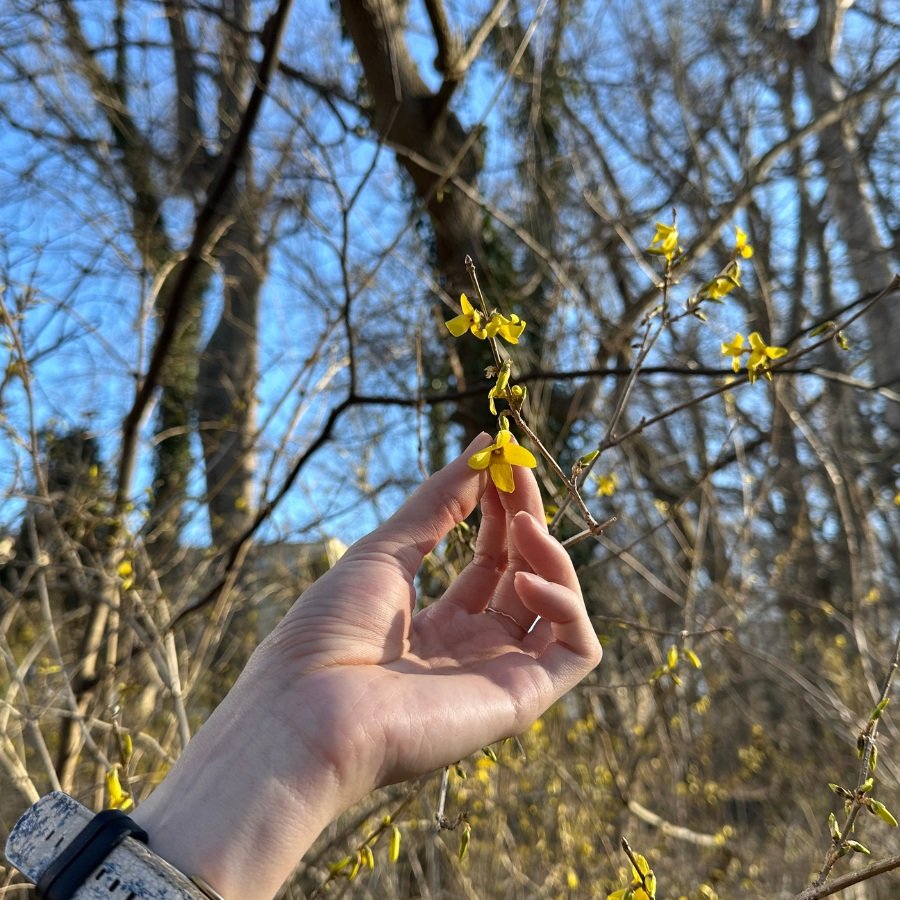Up Top Acres’ farms are firmly planted on DC roofs
/Learn how they take food production and urban greening to the *next level*
photo by potomac conservancy
Think farming and cities don’t go in the same sentence? Think twice. Rooftop farming is all the rage in almost every major metropolitan area in the country. And DC is not an exception—rooftop farming is very much alive and well in the Nation’s capital!
With New York City at the helm, densely populated areas across the country cultivate green roofs and rooftop farms to serve as rainwater buffers. They act like tree canopies and naturally absorb and slow down rainwater, helping to manage the amount of stormwater runoff that enters our waterways.
In addition, green roofs and rooftop farms improve the quality of the air that we breathe and help moderate local temperatures by reducing the urban heat island effect. By insulating buildings from the top, green roofs significantly lower the energy (and bills!) needed for heating and cooling, helping to reduce carbon emissions.
Last but not least, rooftop farms provide amenities to the city’s various residents, such as habitat for pollinators and nutritious food and mind-soothing space for humans.
Discover how one local organization is transforming rooftops in the District into sky-high farms!
Meet Up Top Acres
Up Top Acres is a national leader in rooftop farming that operates 15+ farms in the DC area, most of which are in DC proper. The organization was co-founded in 2014 by Kathleen O’Keefe and Kristof Grina, two horticulturalists with a passion for innovation and sustainable food production.
They originally intended to operate a CSA farm (community-supported agriculture) and supply produce to farmers markets and restaurants, but the concept turned out to be financially unviable. Luckily, it opened a new—and exciting—door.
With the onset of the pandemic, Up Top Acres pivoted to operating rooftop farms mostly to reduce properties’ energy use. Not having to sell their produce to make ends meet, they were able to start donating it to local nonprofits (like Dreaming Out Loud) that provide access to healthy food. Talk about feeding two birds with one scone!
Growing their partnerships
A growing number of property owners now partner with Up Top Acres not just to have their existing green roofs repurposed into rooftop farms but to have them built from scratch.
For example, a rooftop farm at 1015 Half Street in SE DC is a block away from the Nationals stadium and produces a variety of fruits, vegetables, and herbs (such as watermelon, cucumbers, kale, chard, tomatoes, eggplant, rosemary, lavender, or chives).
photo by potomac conservancy
Some of the food these farms produce is immediately enjoyed by the buildings’ tenants (roof-to-table, anyone?), but the majority is donated. Green rooftop spaces, like the one at The Farm, also serve as a respite from the urban environment or a charming event space.
Recently, Kathleen and Kristof opened their first on-the-ground farm in Reston, VA. All of the food this .5 acre farm produces is donated to Cornerstones, a local food pantry. And, all of their site visits and delivery trips are made with cargo electric bikes!
What makes rooftop farming different from traditional farming?
There are quite a few things that need to be considered that probably wouldn’t cross your mind in a more traditional agricultural setting.
First off, a building needs to be able to support the extra weight of the farm. New buildings are typically constructed in a way that this does not pose an issue, but it’s always a consideration. Where weight capacity or space might be limited, there’s the possibility to install raised beds on smaller or unused portions of roofs. They’re not as heavy, occupy less space, but still grow tasty produce. Another win-win!
photo by potomac conservancy
In addition to their insulating properties, one of the many amazing benefits of urban rooftop farms is that they provide a nature-based solution to stormwater management. These green spaces capture water that would otherwise hit an impervious surface (concrete), collecting litter along the way and flowing directly into a sewer (and then the Potomac). Instead, rooftop farms absorb and slow down rainwater, reducing the volume of polluted runoff—the single fastest growing source of pollution in the Potomac River.
🍀 Fun fact: To keep our waterways even cleaner, Up Top Acres does not use fertilizer on their farms to enhance soil fertility. Instead, they plant clover to fix excess nitrogen in the soil before killing it off and only then planting crops.
Rooftop farms also provide additional habitat to various insects and pollinators, increasing local biodiversity. And, they do not have to deal with traditional pests like deer and rabbits, unlike on-the-ground farms.
With all that said, rooftop farm cultivation and management techniques can be quite different from standard agricultural practices. For example, tackling mildew on rooftops is actually a *breeze* because of the great air flow! On the downside, soil freezes much faster on the roof.
But from plant spacing to irrigation, there is a whole lot of “unlearning” that needs to happen if you’ve received a traditional horticultural education, say Kathleen and Kristof. But it was all w-Earth it!
And as for long-term goals? Up Top Acres is hoping that the DC government will fund multi-year research on stormwater management in agriculture that would make the work of rooftop farms like theirs easier—and our water cleaner.
🍂 🍎 Learn more about Up Top Acres at UpTopAcres.com.









